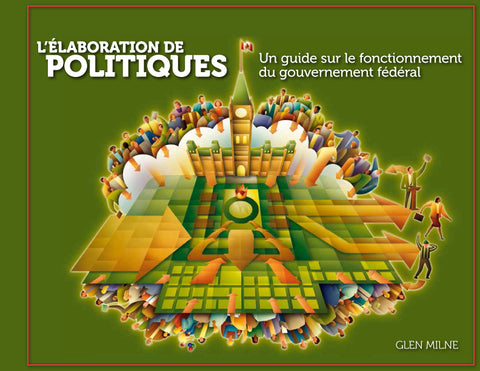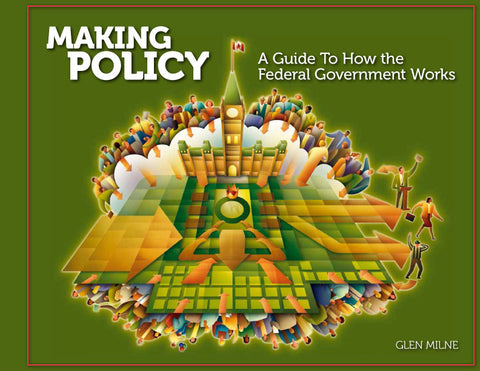Making Policy - A Guide to How the Federal Government Works
The Government of PM Justin Trudeau - Click to order
Le nouveau gouvernement du premier ministre Justin Trudeau > Cliquer pour commander
The purpose of this guide is to provide you with an up-to-date overview – and inside perspective – of how the federal government works, with particular reference to the policy and decision-making process, and suggestions for how you can contribute to it. Our perspective is based on forty years of work as a policy and strategy consultant to departments, central agencies and external stakeholders, plus continuous monitoring, and contributions from you, the reader.
This edition incorporates the changes made by the Government of Prime Minister Justin Trudeau since coming into office in November 2015.
Diagrams, text and cartoons are combined to describe the government’s organization, roles, powers, inputs, deliberations, and outputs. We map the territory by following the policy making process from the formation of the Government’s agenda to Cabinet decision-making and implementation by departments. Our focus is on the center of the federal government: the Prime Minister, Cabinet and central agencies.
Our publication,'Making Policy: A Guide to How the Federal Government Works', is based on 40 years of policy and organizational development for all levels of the federal government and its stakeholders, including: a Prime Minister; approximately 25 federal departments, central agencies and regional offices; and business, voluntary, aboriginal and military organizations.
Contents -
- the nature of policy making and the policy marketplace;
- organization & functions of the executive, legislative, & judicial branches;
- the comprehensive powers of a Prime Minister;
- roles and organization of ministers, Cabinet and political staff;
- organization and responsibilities of central agencies and departments;
- documents & processes for policy, decisions, & the federal budget;
- organization of parliament, its committees and legislative process
- the vital roles of media, lobbyists and stakeholder groups;
- the National Security environment and GOC system for managing it
- access and tactics for making contributions to policy and decision-making.
Users include; federal departments and training agencies; competitors for public service positions; a broad range of university and college programs including business and public administration, law, and advocacy; voluntary and aboriginal organizations; lobbyists and government relations consultants; briefings for new Members of Parliament; home schooling; and officer training in the Canadian Forces.
The Guide is continuously improved via ongoing monitoring and research as well as contributions by participants in Making Policy workshops. We publish a new edition at least once a year to keep up with changes made by the current prime minister.
Testimonials
'Making Policy' is the most succinct and effective guide to Canadian government and policy-making that I know. I have been using it for more than a decade in teaching future officers of the Canadian Armed Forces at the Royal Military College. It is also standard material for senior officers at the Canadian Forces College. Regular updates keep it fresh and accurate. - Lt. Col. David Last, Royal Military College, Kingston, Ontario
'Effective engagement on public policy requires a basic understanding of how government operates. That's why I often share copies of Making Policy with clients before we analyze government initiatives or implement advocacy strategies. It's an essential, visual and entertaining reference.' - Bill Dempster, CEO, 3Sixty Public Affairs
'The addition of Glen Milne's 'Making Policy' has been incredibly helpful for students in my course. It clearly explains the various aspects of the federal government and policy process in Canada and has beautiful visual accompaniments to complement. I highly recommend this publication for any social science courses wishing to study the federal government and policy making in Canada.' - N. Wegner, Department of Political Studies, University of Saskatchewan


